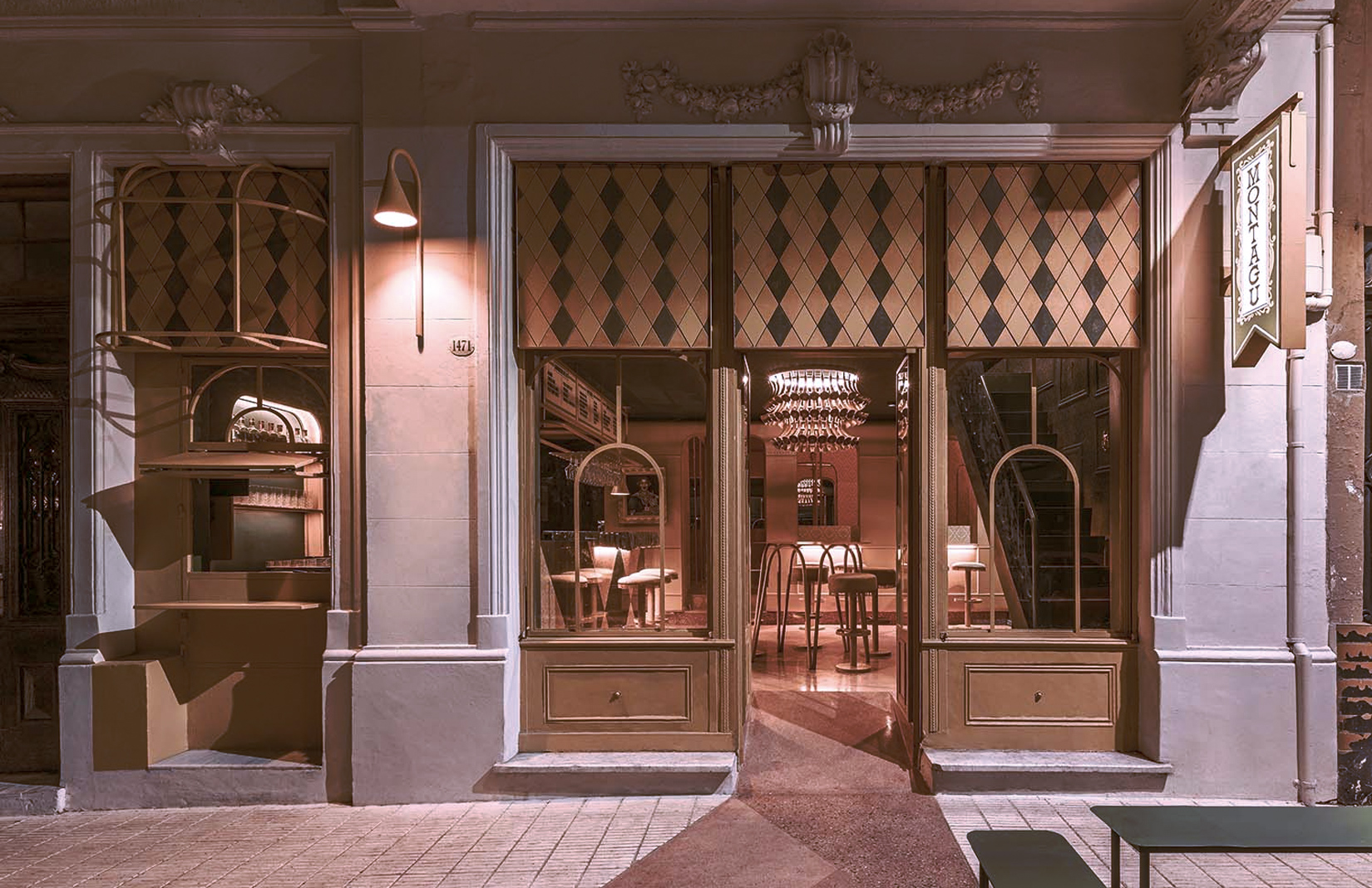‘I used to see my lyrical content and my visual output as two completely separate things,’ says musician and artist Kate Jackson. ‘But it became very apparent [that they] are all part of the same package.’
Jackson gained a cult following in the early 2000s as the frontwoman of Sheffield indie band The Long Blondes. After the group disbanded in 2008, however, she went back to her roots as a painter and moved to Rome. Now, she’s preparing to release her debut solo album, British Road Movies, whose sound and artwork take cues from the concrete landscape of the UK.

‘Trellick Tower’ by Kate Jackson. Part of the series British Road Movies
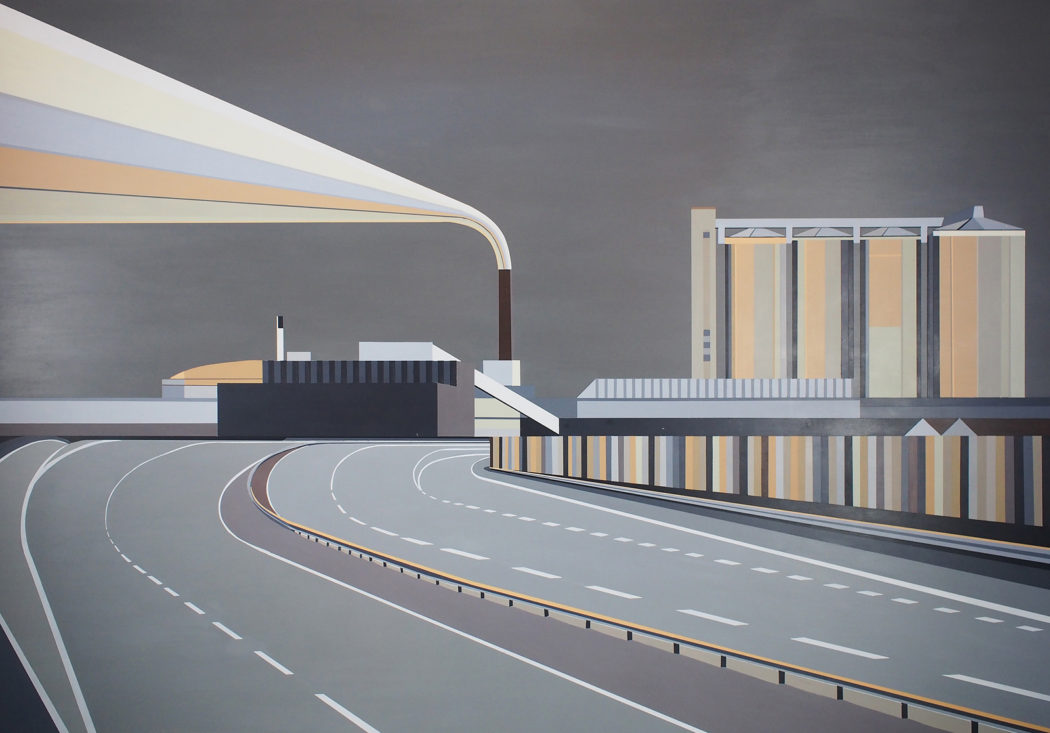
‘Sugar Beet factory’ by Kate Jackson. Part of the series British Road Movies
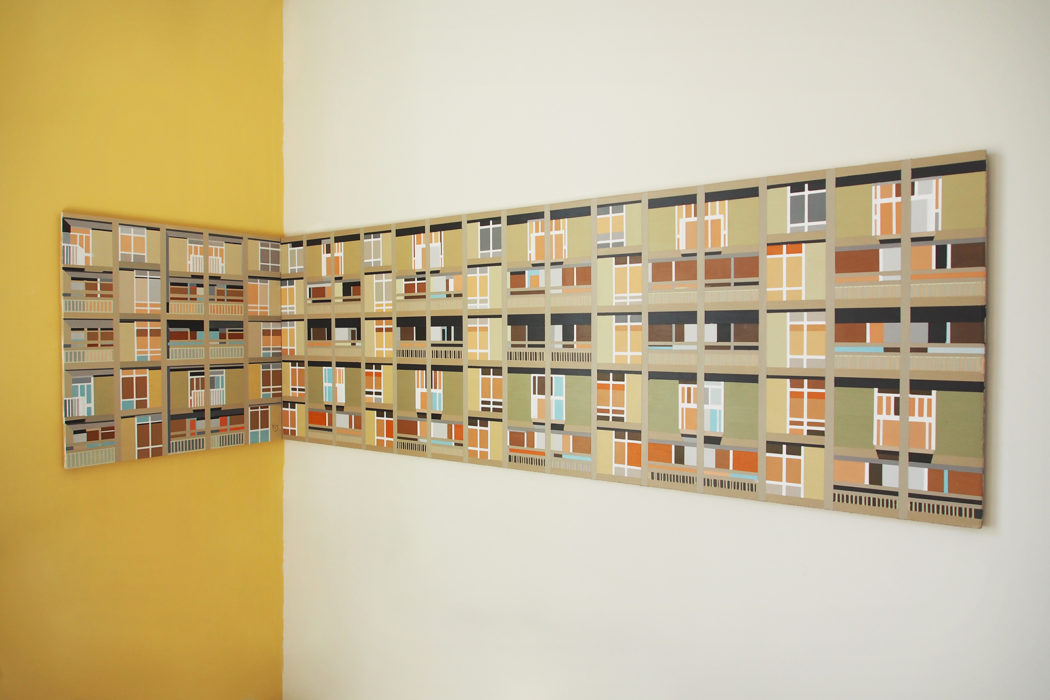
‘Park Hill Flats’ by Kate Jackson. Part of the series British Road Movies
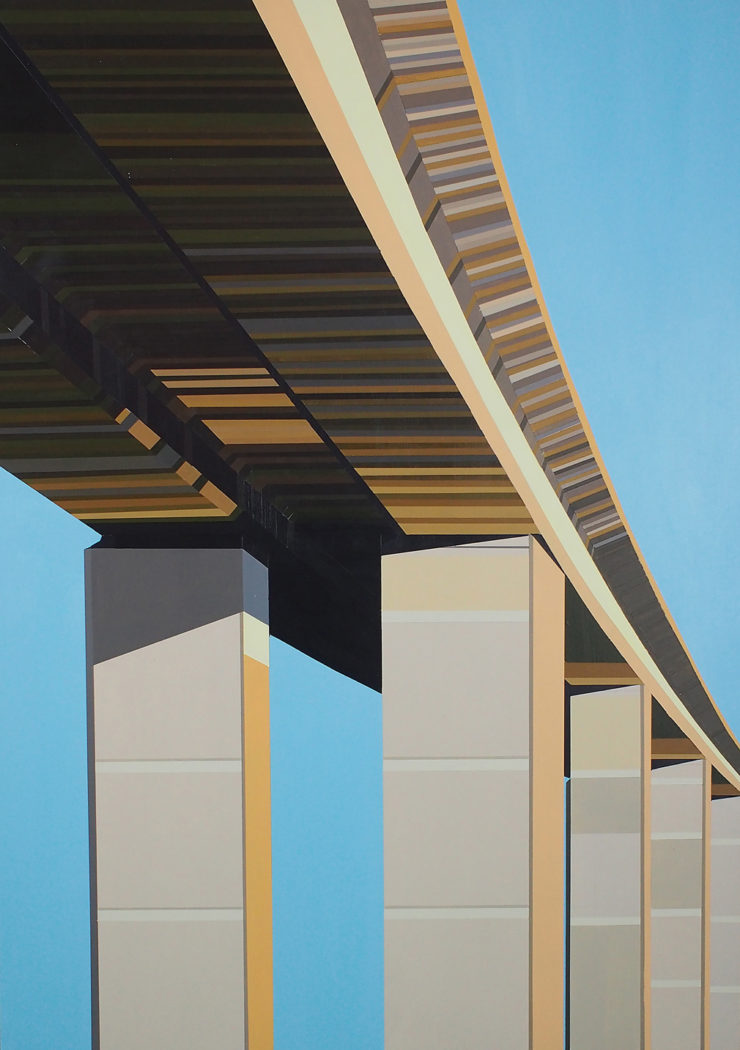
‘Orwell Bridge’ by Kate Jackson. Part of the series British Road Movies
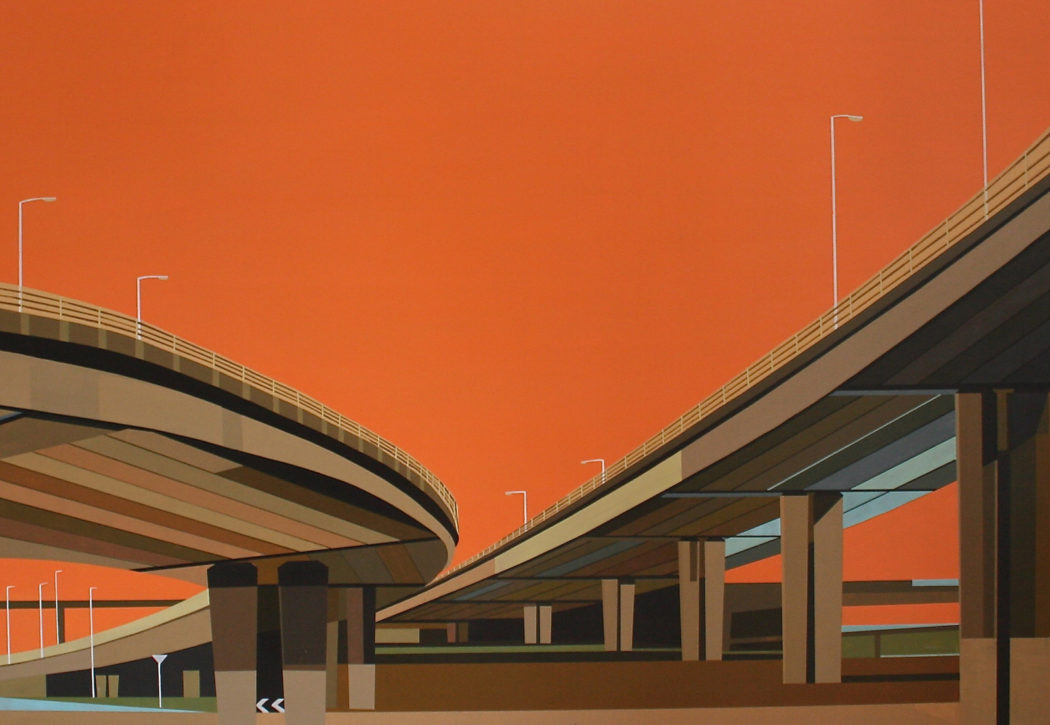
‘North circular road,’ by Kate Jackson. Part of the series British Road Movies
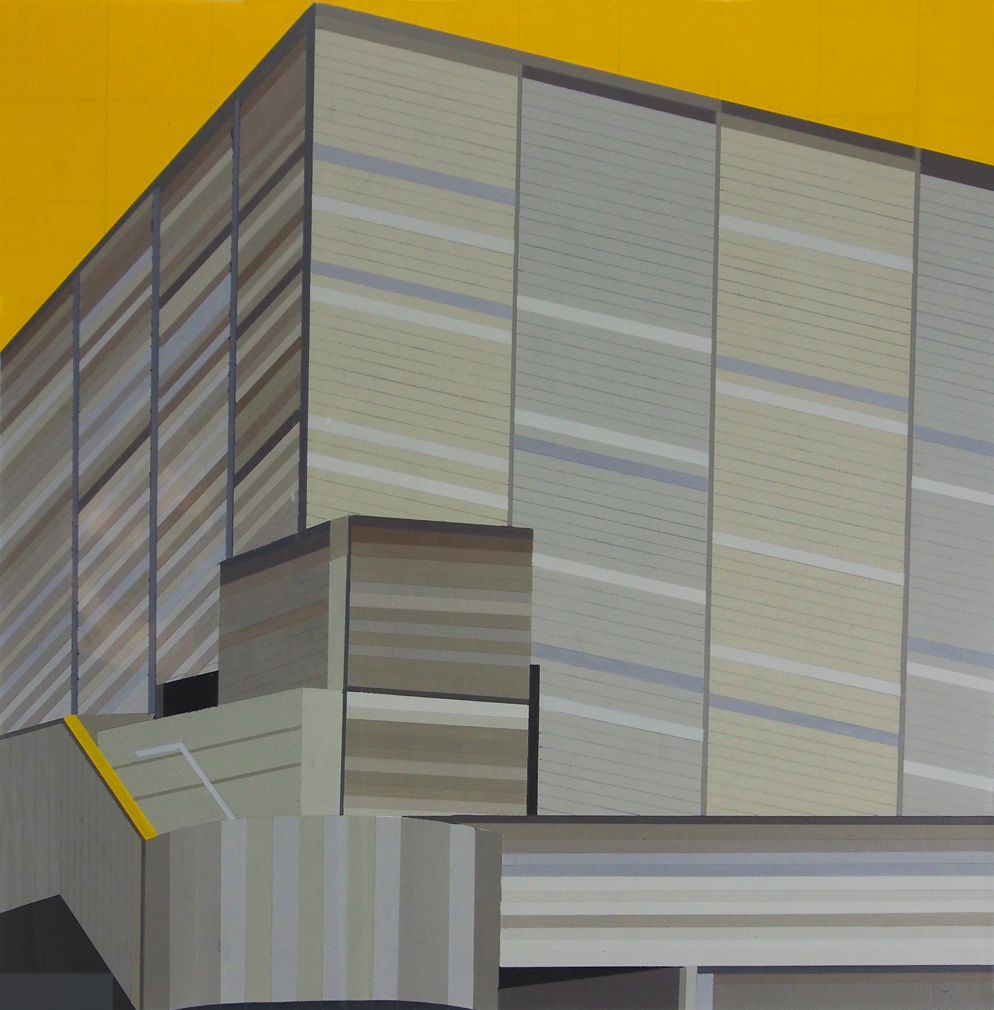
‘Abstract Brutalism IV’ by Kate Jackson. Part of the series British Road Movies
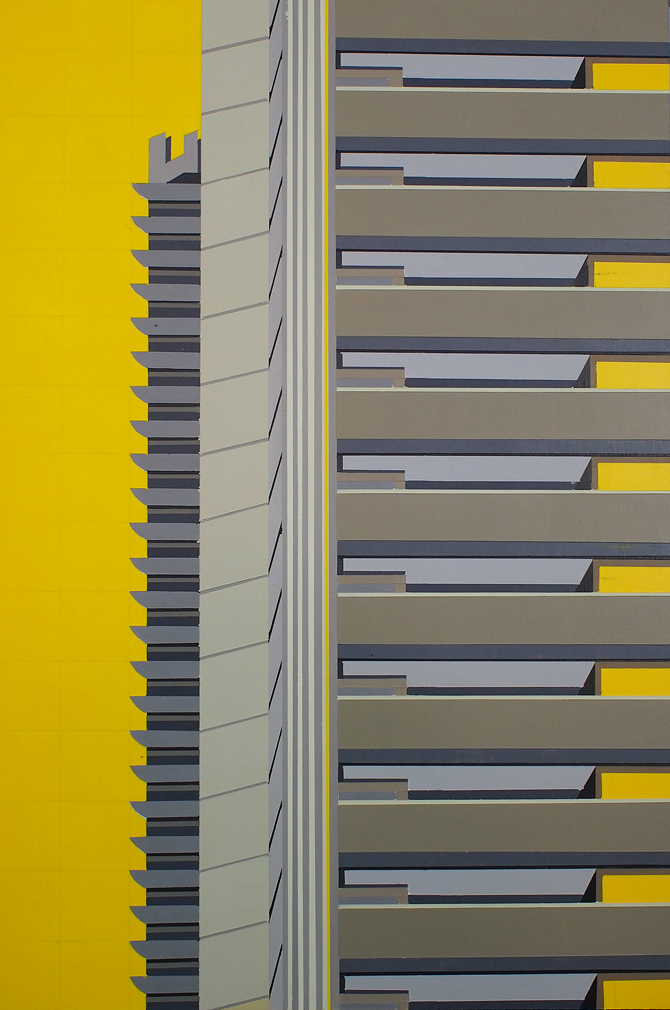
‘High Rise’ by Kate Jackson. Part of the series British Road Movies
‘I was homesick for the grey concrete, clouds and rain,’ she says. ‘And it wasn’t until I came back to the UK and started to revisit the demo tracks I had written with [Suede guitarist and producer] Bernard Butler that I noticed common lyrical threads running throughout the songs.’ These themes include notions of home and belonging, family and alienation, the city, and above all – the British landscape.
But Jackson’s Britain is not one of green rolling hills and ‘Jerusalem’ fame. It is one of black tarmac, beige motorway flyovers, green grass verges and dark hedgerows. Colour comes from the tan rooftops of England’s council estates, grey blanket skies over out-of-town supermarkets and industrial estates, and the blue flashes of motorway road signs.
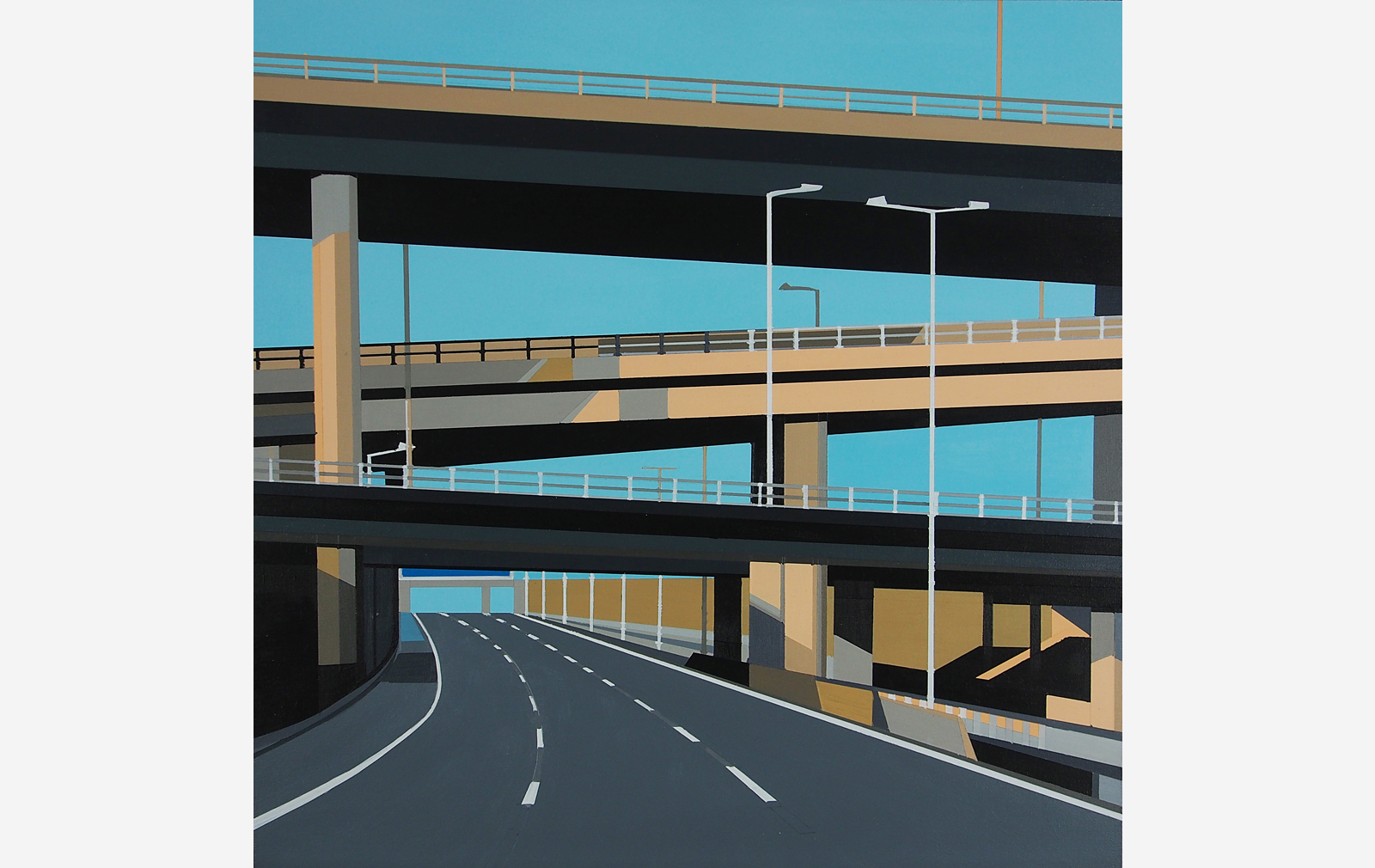
Sheffield’s Brutalist landmarks also left an indelible mark on her aesthetic. When she went to Sheffield University in 1999 it was still a concrete city.
‘Buildings like the Park Hill estate, the “Egg Box” (Sheffield’s Town Hall), Castle market and The Moor were still a major part of the city and were so imposing in comparison to the small market town I had grown up in,’ she says. ‘I might as well have moved to Berlin, it was so different and exciting to me.’
Jackson wandered around this landscape to a soundtrack of David Bowie, Suede, Soft Cell and Sheffield’s finest, Pulp – sounds that would come to influence her own material.
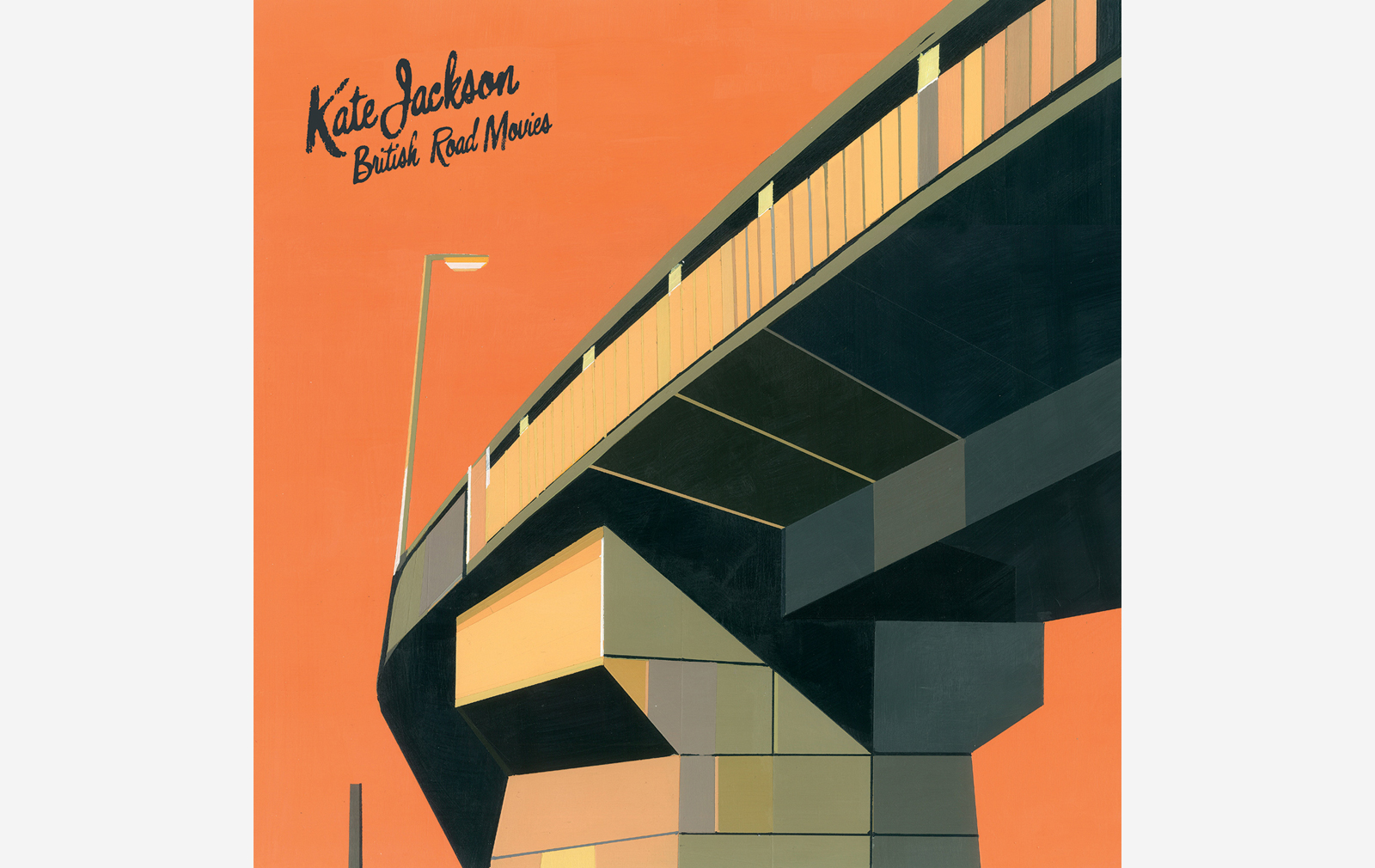
During a summer residency at Smiths Row art gallery in Bury St Edmunds last year, Jackson started a series of paintings called British Road Movies – the eventual title of her album. ‘I made the album artwork over a six-week period during that residency.’
The 10-track album is conceived as a string of cinematic starting points, movie titles with lyrical storyboards that pay homage to the weather, architecture and colour seen from a car window.
And though she’s immortalised some of the UK’s most maligned and celebrated concrete structures in her work – the Barbican and Trellick Tower, respectively – Jackson chose the curvilinear, anonymous form of a concrete flyover for her own album cover.
‘Sometimes I get on the A14 and drive towards London, pretending I’m heading for a long haul flight from Heathrow to New York, even though I’ll probably exit at Newmarket and go back to the studio…’
‘British Road Movies’ is out on 20 May via Hoo Ha Records. An exhibition of Kate Jackson’s paintings is being planned for later in the year – in the meantime you can see the series here












